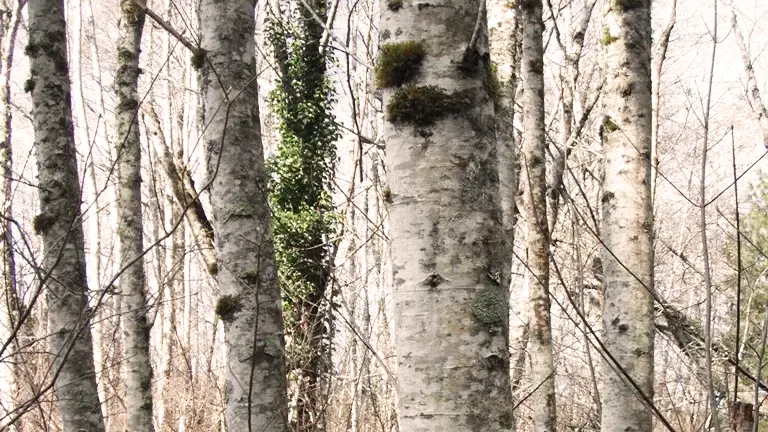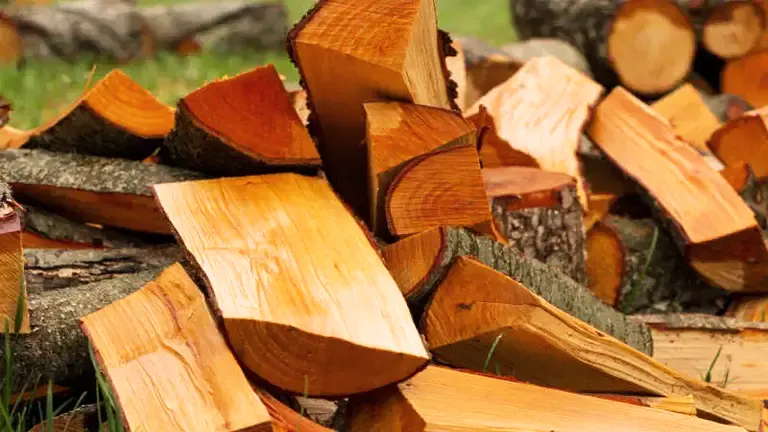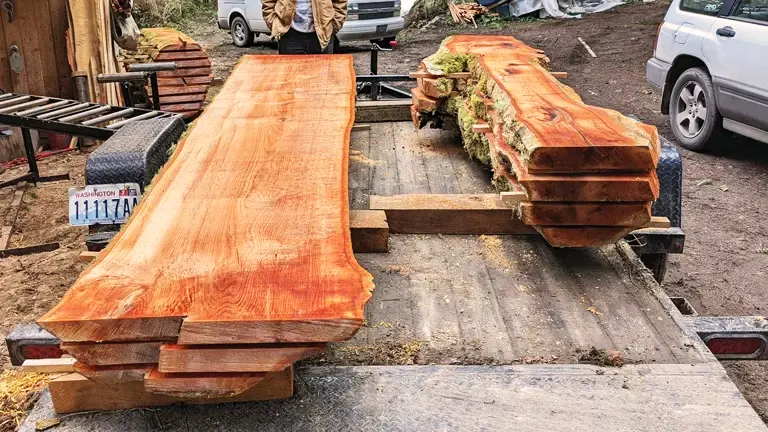Red Alder Lumber
- August 8, 2023
- 0 comment
Red Alder lumber, derived from the Red Alder tree (Alnus rubra), stands out as a sought-after and versatile hardwood due to its alluring warm tones and aesthetic appeal. This wood’s reddish-brown color, occasionally imbued with delightful pink or peach undertones, adds a touch of elegance to any woodworking project.

Its fine and uniform texture, coupled with straight grain patterns and occasional small knots, makes it easy to work with, attracting both seasoned professionals and woodworking enthusiasts alike. Renowned for its moderate density, Red Alder strikes a balance between strength and ease of handling, rendering it an ideal choice for a wide array of woodworking applications.
The exceptional workability of Red Alder is one of its defining characteristics. Cutting, shaping, gluing, and sanding this hardwood are effortless tasks, allowing craftsmen to bring their creative visions to life with ease. Additionally, Red Alder accepts stains and finishes remarkably well, providing a broad spectrum of finish options to suit individual preferences. It finds extensive use in crafting furniture, cabinetry, doors, millwork, and musical instruments, as well as for turning, carving, and veneer production.
| Property | Details |
|---|---|
| Common Name(s) | Red Alder, Pacific Alder |
| Scientific Name | Alnus rubra |
| Distribution | Western North America |
| Tree Size | 60-100 ft (18-30 m) tall, 2-3 ft (.6-.9 m) trunk diameter |
| Average Dried Weight | 28 lbs/ft^3 (450 kg/m^3) |
| Specific Gravity | 0.45 |
| Janka Hardness | 590 lbf (2,620 N) |
| Modulus of Rupture | 12,200 psi (84 MPa) |
| Elastic Modulus | 1.58 million psi (10.89 GPa) |
| Crushing Strength | 5,780 psi (39.9 MPa) |
| Shrinkage | Radial: 3.8%, Tangential: 7.8%, Volumetric: 11.9% |
Characteristics
Color/Appearance
Red Alder typically displays a light reddish-brown color, occasionally with subtle pink or peach hues. The wood has a uniform appearance and may exhibit slight color variations. It has a smooth and straight grain pattern, often interspersed with small knots, giving it a subtle rustic charm.



Grain/Texture
The wood has a fine and even texture with straight grains, making it easy to work with. Its uniform texture enhances the wood’s aesthetic appeal and takes finishes well.
Rot Resistance
Red Alder is not particularly resistant to decay and rot, especially when in contact with the ground or exposed to moisture for extended periods. Proper protection and finishing are necessary to improve its durability in exterior applications.
Workability
One of Red Alder’s key advantages is its excellent workability. It cuts, glues, and sands easily, making it ideal for various woodworking projects. It also stains and finishes well, allowing for a range of finish options.
Odor
Red Alder generally lacks any distinctive odor, making it suitable for indoor applications like furniture and cabinetry.
Allergies/Toxicity
Red Alder is considered non-toxic and not known to cause any allergic reactions. It is a safe wood to work with, and its dust does not pose significant health risks.
Pricing/Availability
Red Alder lumber is relatively abundant, particularly in the Pacific Northwest. Its reasonable availability contributes to its affordability, making it a cost-effective option for woodworking projects.
Sustainability
Red Alder is considered a sustainable choice for woodworking. It is fast-growing and commonly managed in responsible forestry practices, making it a renewable resource.
Common Uses
Red Alder is employed in a wide range of applications, including furniture, cabinetry, millwork, doors, musical instruments, and interior trim. It is also used for turning, carving, and veneer production.



Frequently Asked Question
- Is Red Alder suitable for outdoor use?
Red Alder is not highly resistant to decay and should not be used outdoors without proper protection, such as sealants and finishes. - Can I stain Red Alder easily?
Yes, Red Alder takes stains and finishes well, allowing you to achieve various color options and finishes. - Is Red Alder a hardwood or softwood?
Red Alder is a hardwood, although it is not as hard as some other hardwoods commonly used in woodworking. - Is Red Alder a sustainable choice?
Yes, Red Alder is considered sustainable due to its fast growth and responsible forestry management. - Does Red Alder have any unique odor?
No, Red Alder typically lacks any distinctive odor, making it suitable for indoor applications. - What is the average size of a Red Alder tree?
Red Alder trees can reach heights of 60-100 feet and have trunk diameters of 2-3 feet. - Can Red Alder be used for carving?
Yes, Red Alder is suitable for carving due to its fine and even texture. - Is Red Alder a good choice for beginners in woodworking?
Yes, Red Alder’s easy workability makes it a great option for beginners learning woodworking skills. - How does Red Alder compare to other hardwoods in terms of hardness?
Red Alder is considered a moderately hard wood, with a Janka hardness rating of 590 lbf, making it softer than many common hardwoods like oak or maple. - Does Red Alder have any resistance to insect attacks?
While not highly resistant, Red Alder does possess some natural resistance to certain insects due to the presence of extractives in the wood. However, it is not as effective as other naturally durable hardwoods like cedar or teak.
We’d love to hear from you! Share your personal experiences and thoughts about Red Alder Lumber in the comments section below. Your insights could be instrumental in helping others make informed decisions!






Leave your comment